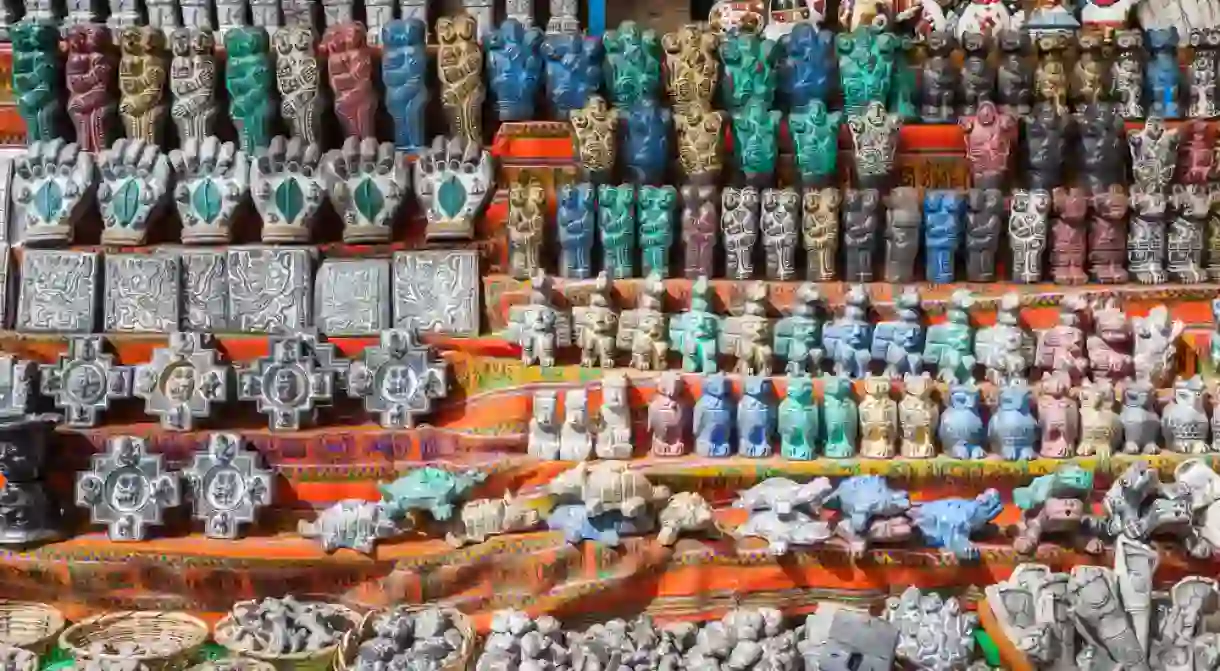Why You Need to Visit Bolivia's Spooky Witches' Market Right Now

Most people go to the market to buy milk, bread or maybe some clothes. In La Paz, however, the locals visit a series of makeshift stalls known as the Mercado de las Brujas (The Witches’ Market) for a different type of produce. Whether it be potions, spells, dried frogs or lucky charms, all things witchcraft are up for sale at the city’s most unearthly attraction.
While the Witches’ Market in downtown La Paz is undoubtedly the most famous, it is by no means unique. Similar markets can be found in every sizable Bolivian town and all throughout the Andes. Even today, these pre-Colombian beliefs continue to thrive as indigenous communities remain reluctant to let go of their age-old traditions.

Upon arriving at the market, visitors are overwhelmed by a dizzying display of color and aroma. All sorts of oddities are on display that promise to cure ailments of both the body and the soul. Dried animals such as frogs, snakes, turtles, starfish and armadillos line the stalls, while native herbal remedies including the mystical ayahuasa are dished out by the spoonful. Prepackaged spells and potions are particularly popular for their convenience. Wrapped up in colorful little boxes, they offer the perfect solution for superstitious Bolivians on the go.

Peer around the market and you may see some serious looking men and women in black bowler hats. These are the yatiri, enlightened Andean witch doctors who offer a variety of spiritual services. For a small fee, they perform an ancient ritual with the sacred coca leaf, foretelling fortunes of health, love, finances and emotional well-being. The yatiri are also masters of the Challa, an Andean ritual where an offering table is burnt in exchange for a blessing from the gods. More sinister ceremonies involve boiling frogs which are used to place a curse on an enemy of the client’s choosing.

Then their are the Kallawaya, traditional Andean healers who favor natural remedies over western medicine. They draw upon hundreds of years of knowledge to administer bizarre treatments such as lizard ointment and coca leaves which are said to be effective on a wide range of ailments. However strange they may seem, these age-old practices have won the support of qualified medical professionals as well as the Bolivian government.

But what grabs the attention of most visitors are the gruesome dehydrated llama fetuses which adorn every stall. According to tradition, they are buried underneath buildings during construction to appease Pachamama (mother nature) in exchange for good fortune. Larger constructions require a living fully grown llama while the biggest projects are rumored to use humans, primarily homeless alcoholics who can be found unconscious outside one of the city’s Elephant Cemeteries.

Located on Santa Cruz street between Lineras and Illampu, the market is an easy detour from the city center. When visiting, remember that although these traditions might seem fanciful to an outsider, they are taken very seriously by the locals. Avoid making jokes and always ask permission before taking a photo. Vendors are usually only happy to answer questions in detail in exchange for a purchase or a small fee.
All sorts of lucky charms and artifacts are up for sale, although keep in mind that many countries will not allow the transport of organic materials across their borders. For a more practical shopping experience, check out the tourist markets of nearby Sagarnaga and Linares for brightly colored alpaca jumpers and a variety of souvenirs.
The Witches’ Market, Melchor Jimenez, La Paz, Bolivia
Tourist Market, Calle Sagarnaga, La Paz, Bolivia













